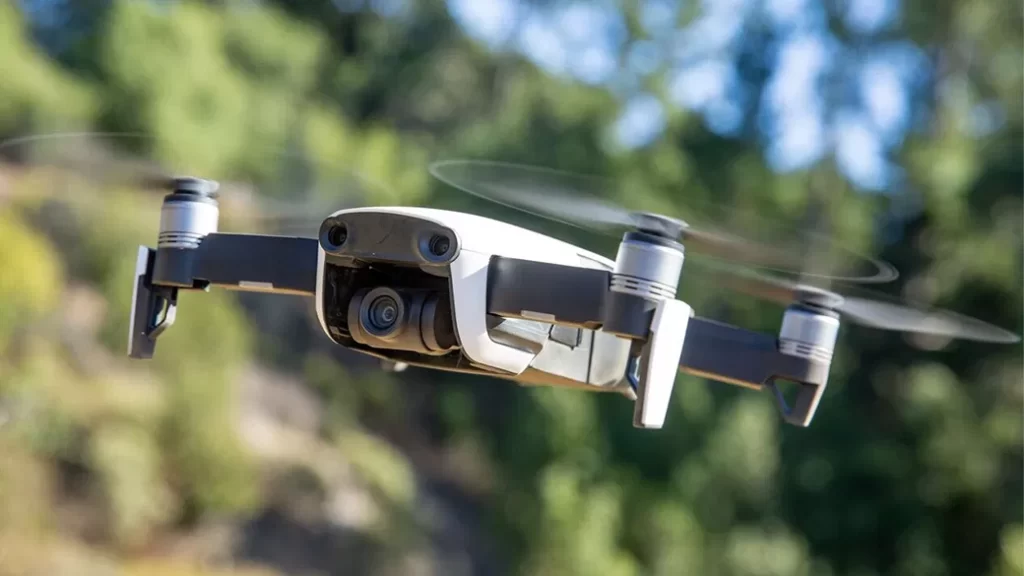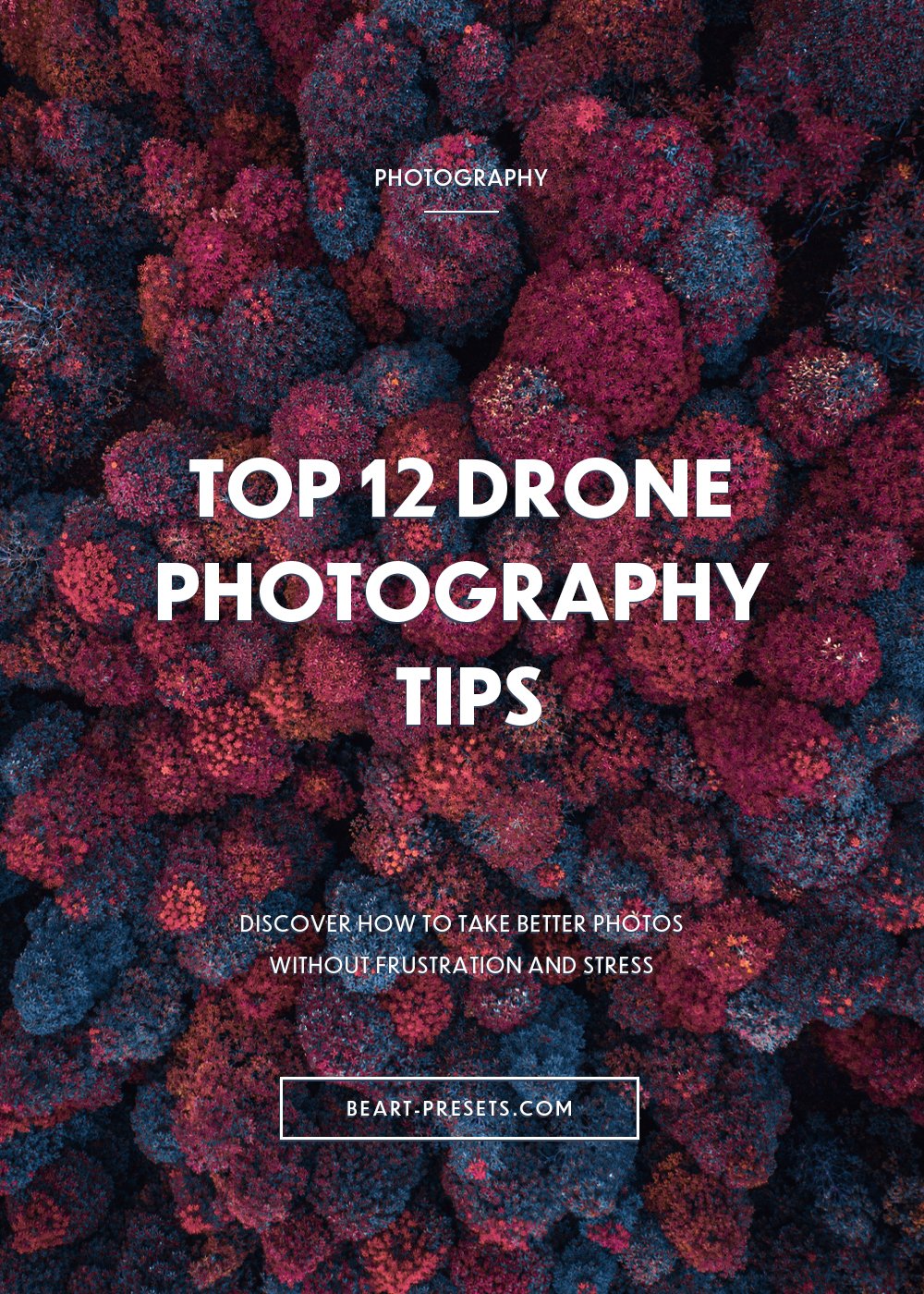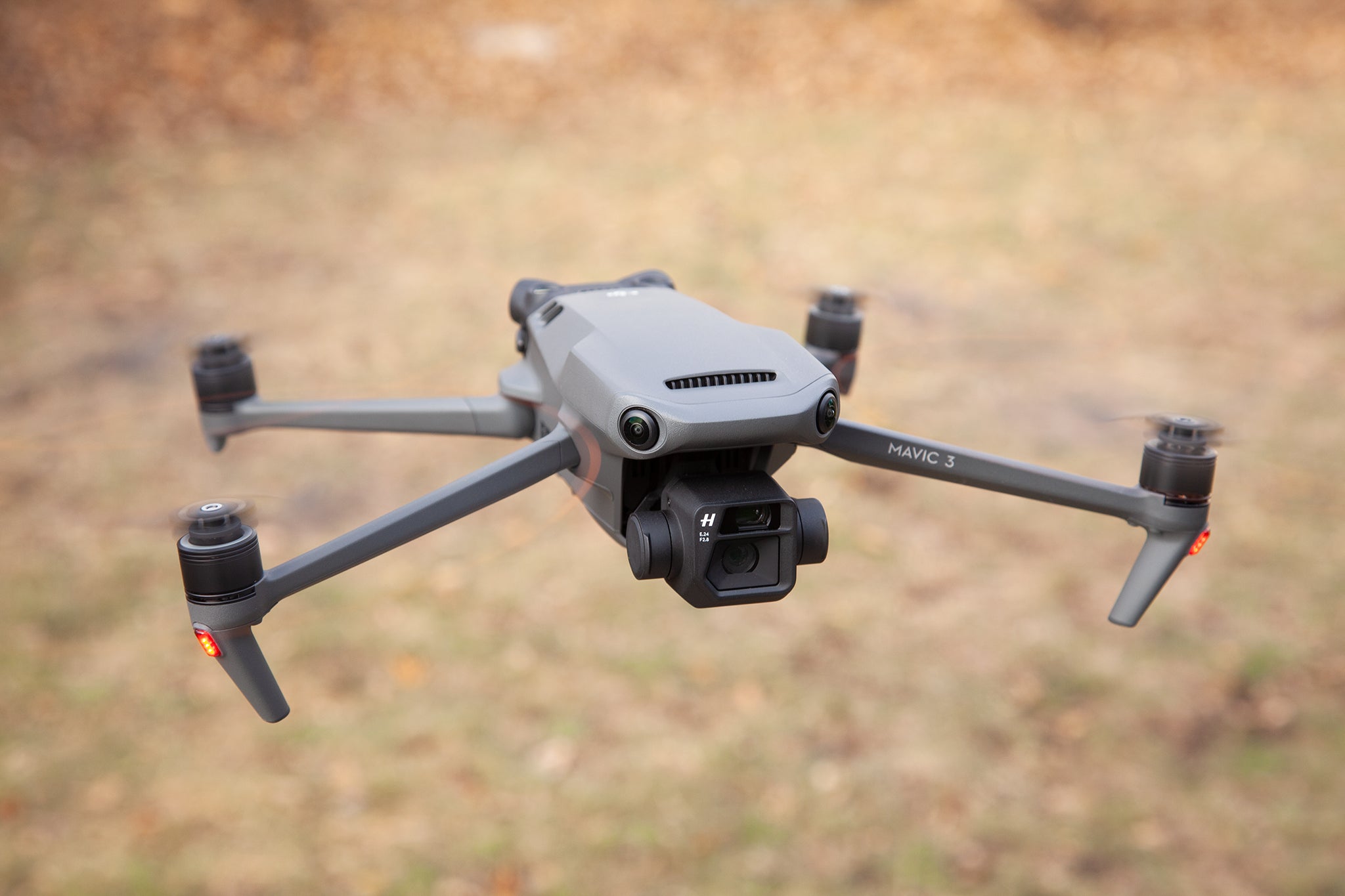Master the Art of Flying a Drone Camera: Top Tips!

To fly a drone camera, you need to first familiarize yourself with the drone’s controls and regulations. Once you have done that, ensure that you have a clear line of sight and avoid flying in restricted airspace.
Drones with cameras have become increasingly popular due to their capabilities in capturing stunning aerial shots. However, as with any technology, proper use and operation are crucial to avoiding accidents and potential legal issues. Before you embark on your drone-flying journey, you need to understand the proper techniques and safety measures necessary for a successful flight.
This article will provide you with essential tips and tricks for flying a drone camera, including pre-flight checks, mapping routes, and handling emergency situations. Whether you’re an enthusiast or a professional, mastering these tips will help you capture stunning aerial footage while keeping yourself and others safe.

Credit: www.beart-presets.com
How To Choose The Right Drone Camera
Tips For Flying A Drone Camera?
If you are interested in drone photography or videography, then choosing the right drone camera is crucial. From compact drones to professional-grade options, there are a range of models available, each with its distinctive features. Here are some factors to consider when choosing the best drone for aerial photography.
Discuss The Different Types Of Drones And Their Features
There are different types of drones available in the market, each possessing unique features. Here are three popular types of drones for aerial photography.
- Compact drones: These are lightweight drones that are easy to carry and can be flown indoors or outdoors. They are ideal for hobbyists or anyone looking for an entry-level drone. Compact drones are equipped with basic features and are relatively affordable.
- Prosumer drones: These are high-end drones with advanced features such as stabilizing gimbals, high-resolution cameras, and sensors. They are capable of taking professional quality photos and videos and are suitable for intermediate and professional photographers.
- Professional-grade drones: These are top-of-the-line drones that are designed for commercial purposes such as cinematography, surveying, and mapping. Professional drones are equipped with advanced features such as multi-camera payloads, long battery life, and obstacle avoidance.
Explain Factors To Consider When Choosing The Best Drone For A Camera
Choosing the right drone camera for aerial photography can be overwhelming. To make it easier, consider the following factors.
- Camera resolution: Look for cameras with higher resolution for better image and video quality. For best results, choose drone cameras with a resolution of 4k or higher.
- Gimbal stabilization: A gimbal stabilizes the camera, ensuring that it remains steady while in the air, enhancing the quality of your footage. Look for drones with mechanical or digital gimbal stabilization.
- Flight time and battery life: Check the drone’s battery life and flight time to ensure that it can fly long enough to capture the shots you need. Look for drones with at least 20-30 minutes of flight time.
- Obstacle avoidance: Drones with obstacle avoidance sensors can detect and avoid objects in their path, reducing the risk of crashes. This feature is important, especially when flying in crowded areas or near buildings.
- Flight range and control: The drone’s maximum flight range and how it’s controlled is important. Choose drones with a long-range and efficient control systems, allowing you to capture shots from a distance.
When choosing a drone camera for aerial photography, consider your budget, preferences, and the above factors. By choosing the right drone camera and mastering the art of flying it, you are on your way to capturing incredible aerial shots.
Understanding Drone Camera Controls And Settings
Getting started with flying a drone camera is an exciting experience, but it can be a bit overwhelming, especially if you are new to the technology. Understanding the basics of drone camera controls and settings can help you take incredible aerial footage with ease.
Here are some tips on how to master the fundamental controls and settings of a drone camera, and optimize them for different shooting scenarios.
Highlight The Basic Controls For A Drone Camera
Before you start flying your drone camera, it is essential to have a good understanding of the basic controls. Here are the primary drone camera controls you need to know:
- Pitch control: Tilts the camera up and down while in flight.
- Roll control: Tilts the camera side-to-side while in flight.
- Yaw control: Rotates the drone camera left or right when in flight.
- Throttle control: Manages the drone’s altitude, that is, how high the drone flies in the air.
It is crucial that you get familiar with these four essential controls, as they will enable you to maneuver your drone easily and accurately.
Explain The Importance Of Understanding Camera Settings
Just as with any other camera, understanding your drone camera settings is critical in producing high-quality footage. Knowing how to adjust camera settings such as iso, shutter speed, and white balance can help you capture stunning aerial images and videos.
Understanding these settings will also allow you to customize your videos to your desired brightness, contrast, and color balance.
Include Tips For Optimizing Camera Settings For Different Scenarios
Optimizing camera settings for different shooting scenarios can significantly improve the quality of your footage. Here are some tips on optimizing camera settings for different scenarios:
- Bright and clear conditions: Use iso 100, a fast shutter of around 1/1000th of a second, and a narrow aperture for a shallow depth of field.
- Low light conditions: Use a higher iso setting (but not too high as to cause graininess), a slower shutter speed to capture more light, and avoid wide apertures to maintain clear images.
- Time-lapses: Use a slower shutter speed (around 1/30th of a second), and program your drone camera to take pictures at regular intervals.
- Panoramic shots: Use a 180-degree shutter angle, which helps the camera produce smoother shots when in motion.
By optimizing your camera settings according to different scenarios, you’ll take your drone photography to the next level.
Remember, mastering the basic controls and understanding camera settings is crucial in taking stunning aerial photos and videos. By applying these tips, you’ll have all the knowledge you need to take incredible footage with your drone camera.
Pre-Flight Preparations
Discuss The Importance Of Performing Pre-Flight Checks:
Before starting your drone camera, it’s essential to run pre-flight checks to guarantee a safe and smooth flight. Neglecting these pre-flight checks could result in unexpected errors or even crashes. Let’s go over a few reasons why performing pre-flight checks is crucial:
- Ensures safe operation of your drone camera.
- Reduces the risk of crashes, damage, and injury.
- Helps detect any technical problems or hardware failure before launching the drone.
- Saves time and money by preventing unnecessary repairs or replacements.
- Helps capture high-quality footage and photos.
The Steps To Take Before A Drone Camera Flight:
Performing pre-flight checks may seem tedious, but it’s time well-spent, ensuring the safety, and longevity of your drone camera. Here are a few vital steps to follow before embarking on a drone camera flight:
- Battery charging: Fully charge all batteries to ensure your device remains airborne throughout the flight.
- Firmware and software updates: Check for firmware and software updates, as they often include performance improvements and bug fixes.
- Gps calibration: Calibrate your drone’s gps to help stabilize the flight and produce accurate footage and photos.
- Camera calibration: Make sure your camera is properly calibrated before takeoff, as it can affect the quality of the footage and photos.
- Motor function checks: Test the motors’ functionality to guarantee they operate correctly, and replace any damaged or worn-out parts.
- Weather check: Observe the weather conditions and avoid flying in adverse weather, such as strong winds, storms, or rain.
- Flight plan: Have a flight plan in place to avoid unwanted collisions, and ensure the drone stays within your visual line of sight.
- Obstacle check: Always check for any obstacles that may interfere with your flight path and avoid flying too close to people, buildings, or animals.
- Remote controller check: Make sure your remote controller is fully charged and working correctly before takeoff.
By following these pre-flight preparation guidelines, you can ensure that your drone camera operates safely and efficiently, making it easier to capture high-quality footage and photos while minimizing the risk of accidents/errors during flying.
Tips For Beginning Pilots
Tips For Beginning Pilots: How To Fly A Drone Camera
Flying a drone camera may seem daunting for beginners, but with the right guidance, it can be a rewarding experience. Here are some tips for beginner pilots on how to fly a drone camera.
Taking Off A Drone Camera
- Step 1: Make sure that your drone camera is in a safe location, with no obstacles or people nearby.
- Step 2: Turn on your drone camera controller and drone camera by pressing the power buttons.
- Step 3: Push the left joystick up slowly to take off. Keep pushing until your drone camera reaches your desired altitude.
- Step 4: Use the right joystick to steer the drone camera right, left, forward, or backward. Keep the joystick steady to maintain the drone camera’s altitude.
Landing A Drone Camera
- Step 1: Make sure that your drone camera is in a safe location, with no obstacles or people nearby.
- Step 2: Press the left joystick down slowly to bring the drone camera to a lower altitude.
- Step 3: Keep reducing the drone camera’s altitude until it is close to the ground.
- Step 4: Press the left joystick down completely to land the drone camera.
Tips For Flying A Drone Camera
- Maintain a line of sight with your drone camera while it’s in the air.
- Stay clear of restricted airspace or no-fly zones.
- Check the weather before flying your drone camera, heavy wind or rain can damage your drone camera.
- Keep a spare charged battery so that you can switch it out when the first battery dies.
- Fly the drone camera at low speed while you’re still learning.
- Do not fly your drone camera over crowds, people, or busy roads.
- Keep in mind that you are responsible for your drone camera’s actions.
Learning to fly a drone camera can be an exciting experience, but always remember to keep safety first. By following these tips, you can fly your drone camera with confidence and reduce the risk of accidents. Bon voyage!
Advanced Techniques For Experienced Pilots
Flying a drone camera requires skills, patience, and determination, but mastering flight techniques can help you capture breathtaking images and videos. While basic maneuvers like hovering, ascending and descending, and forward and backward movements can help novice pilots, advanced techniques like orbiting, craning, and panning are great for experienced pilots who want to capture more creative videos and images.
Orbiting
Orbiting involves recording a moving object from a fixed point of view by flying the drone in circular patterns. Here are some key points:
- Fly the drone in circles either clockwise or counterclockwise around an object or a person.
- Keep the drone at a constant distance from the object or person to ensure smooth footage.
- Use a slow and steady speed to avoid shaky footage.
- The technique is ideal for recording panoramic videos or images of landscapes, buildings, or events.
Craning
Craning is a technique that involves capturing footage by flying the drone vertically up or down. Here are some key points:
- Ascend or descend vertically with the drone while recording.
- Keep the camera pointed at the object to maintain the subject’s position in the frame.
- Use smooth and slow movements to avoid shaky footage.
- The technique is ideal for creating dramatic and visually stunning shots of tall buildings, waterfalls, or cliffs.
Panning
Panning is a technique that involves flying the drone horizontally while recording. Here are some key points:
- Move the drone smoothly from side to side while keeping the camera pointed at the subject.
- Use a slow and steady speed to ensure smooth footage.
- The technique is great for capturing video or images of moving objects, such as cars, sports events, or wildlife.
Different flight patterns can be used to capture different types of images or videos. Now that you know more about these advanced techniques, you are well on your way to capturing more stunning footage and expanding your repertoire as an experienced pilot.
Legal Considerations For Flying A Drone Camera
Flying a drone camera can be an excellent way to capture breathtaking aerial footage of landscapes, cityscapes, and events. However, before taking your drone skyward, it’s essential to understand the legal considerations and regulations governing the use of drone cameras.
Explain The Legal Requirements For Flying A Drone Camera
Flying a drone camera is subject to strict rules and regulations that vary based on location and intended use. To abide by the law, you must:
- Register your drone with the faa and obtain a remote pilot certification (part 107) if using it for business purposes.
- Fly your drone at or below 400 feet above the ground.
- Keep your drone in visual line-of-sight at all times during the flight.
- Avoid flying your drone in prohibited areas such as airports, national parks, and other no-fly zones.
- Respect personal privacy and avoid flying your drone in someone’s private property without their consent.
Discuss Rules And Regulations Around Drone Camera Use In Different Locations
Different countries, states, and cities have adopted various rules governing drone camera use. Some areas may ban the use of drones altogether, while others may impose restrictions based on flying height, weight, and specifications, including:
- The federal aviation administration (faa) regulates drone camera use in the united states, while other countries may have their own aviation authority rules.
- National parks and wildlife reserves typically impose their drone regulations, such as yellowstone national park, which bans drones in the park.
- Urban areas may have local ordinances suited to their environment, such as height restrictions, no-fly zones around specified public areas such as hospitals or schools.
Understanding the legal considerations and regulations surrounding drone camera use is crucial for safe and responsible flying. Always follow the rules if you want to keep your drone in the skies.
Frequently Asked Questions For Tips For Flying A Drone Camera?
What Is A Drone Camera And How Does It Work?
A drone camera is a small, unmanned aircraft equipped with a camera that can be controlled remotely. It works by using a gps system and a gyroscope to stay stable in the air while capturing footage.
What Are Some Tips For Flying A Drone Camera?
Some helpful tips for flying a drone camera include practicing in an open, safe area, understanding faa regulations, using a checklist before takeoff, and being aware of your surroundings.
How Can I Ensure My Drone Camera Stays Steady While Filming?
To ensure your drone camera stays steady while filming, make sure you’re flying in optimal weather conditions, calibrating your drone’s compass and gimbal, and using a stabilizing device like a gimbal. Also ensure that you’re not flying too fast or too close to potential obstacles.
Do I Need Any Special Training Or Certification To Fly A Drone Camera?
It depends on where you plan to fly your drone camera. If you plan to use it for commercial purposes or fly it in certain areas, you may need to obtain a remote pilot certificate from the federal aviation administration.
Conclusion
Flying a drone camera can be an exhilarating experience. It’s important to remember that safety should always come first. By following the tips outlined in this blog post, you’ll be well on your way to capturing stunning footage while avoiding any potential mishaps. Always check and follow local regulations, practice in a safe and open area, and ensure your equipment is in proper working order. Keep in mind the importance of respecting others’ privacy and the environment surrounding you.

